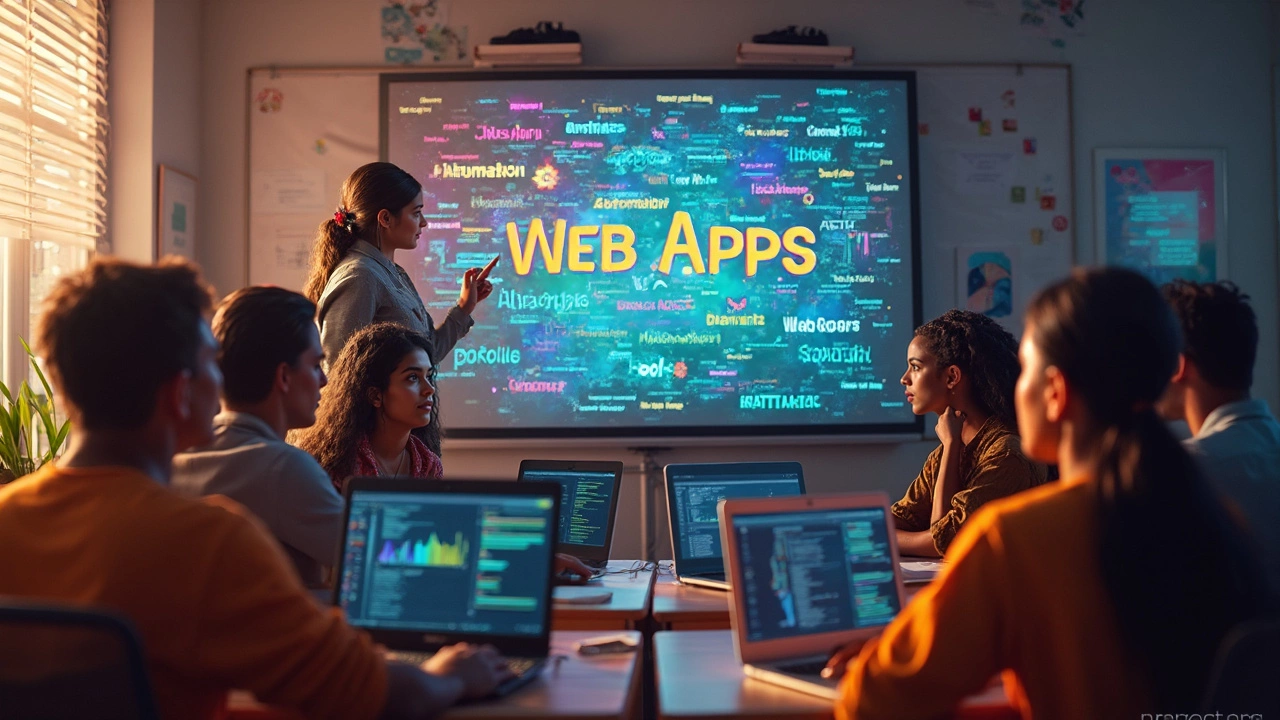Ever wondered how much a coding class sets you back these days? It's a broad question with a lot of answers because it really depends on what you're looking for. Are you eyeing those fancy bootcamps, or leaning more towards an online course you can do in your pajamas? There's a price tag for each, and we're here to break it all down for you.
The good news? There's a coding class out there for practically every budget. You could be shelling out as little as a few bucks or as much as thousands. Yeah, it feels like a wild ride, right? But understanding the factors that influence these prices can make the process less overwhelming. Let’s dig into it and see what makes up the cost of coding classes, so you can plan your learning adventure wisely.
- The Range of Costs
- Online vs In-Person Options
- Free Resources Available
- What Affects Pricing?
- Choosing the Right Class for You
The Range of Costs
Alright, let's get into the nitty-gritty of how much those coding classes might cost you. Prices are all over the place, and it's important to know what you're getting into before taking the plunge. First off, you can definitely find some free options on the internet. Websites like Codecademy, freeCodeCamp, and Khan Academy offer beginner-friendly courses at absolutely no cost. They cover basics like HTML, CSS, and JavaScript—perfect if you're just dipping your toes in.
If you're looking towards more structured learning, online platforms like Udemy or Coursera are your next step. Courses here can range from $10 to $200; they often include video lessons, quizzes, and certificates upon completion. These are great if you're looking for flexibility and affordability.
Now, if you're ready to dive deep and have some cash to spend, coding bootcamps might be your go-to. These intensive programs aim to turn you into a proficient coder in a few months. The price tag for these can range from $7,000 to over $20,000, depending on the institution and location. Yes, it's a hefty sum, but bootcamps like General Assembly or Flatiron School guarantee a comprehensive, immersive experience.
For a more traditional approach, community colleges and universities also offer coding courses. If you're pursuing a degree or a certificate, the costs will align with typical tuition fees, which can be anywhere from a few hundred to thousands per course, depending on whether you're in-state or out-of-state.
| Course Type | Cost Range | Features |
|---|---|---|
| Free Resources | $0 | Basic, Self-paced, Online |
| Online Platforms | $10 - $200 | Flexible, Certificates |
| Bootcamps | $7,000 - $20,000+ | Intensive, Career-focused |
| Community Colleges/Universities | $300 - $3,000 per course | Structured, Degree-focused |
So, there you have it, the full spectrum of coding class costs. The choice really depends on your personal and financial goals. Whether you're learning for fun or aiming for a new career, there's an option out there that fits your wallet.
Online vs In-Person Options
So, you're torn between online and in-person coding classes? It's a common dilemma, but hey, it's all about what fits your style and life the best. Both have their ups and downs. Let's break them down a bit to help you decide.
Online coding classes are super convenient. You can learn at your own pace, and the variety is insane—you can find everything from free introductory courses to pricey bootcamps that promise job placement. A solid example of an online course is Codecademy. They offer free content, but also have a Pro version for $39.99 a month that includes real-world projects and quizzes to beef up your coding chops.
"Online learning is not the next big thing, it is the now big thing."—Donna J. Abernathy
Then there's the in-person option. These are great if you thrive on face-to-face interaction and instant feedback. In-person bootcamps like General Assembly or BrainStation can progress your skills at an impressive rate, thanks to being around fellow learners and mentors. But expect to shell out more cash. In-person classes often cost somewhere between $8,000 to $15,000 for a few months of intensive learning.
Here’s a quick look at some differences:
| Features | Online | In-Person |
|---|---|---|
| Cost Range | Free to $20,000+ | $8,000 to $15,000 |
| Flexibility | High | Low |
| Networking Opportunities | Moderate | High |
| Learning Pace | Self-paced | Structured |
Deciding isn't easy, but knowing your learning style can help. If you're juggling a job or family, online might be your best bet. But if you feel like you need direct help and instant answers to your questions, the in-person hustle is where it's at. In the end, both options can seriously level up your coding game.

Free Resources Available
Diving into the world of coding doesn't have to break the bank. In fact, there's a treasure trove of free resources out there that can kickstart your journey.
Let's start with the big names. Platforms like Codecademy and Coursera often offer free introductory courses. You can get a feel for programming without spending a dime. Codecademy provides interactive lessons that cover basics in languages like Python, JavaScript, and HTML/CSS. They've been a go-to for beginners since they launched, thanks to their hands-on approach.
Then there's Khan Academy, known for its clear and straightforward teaching style. They offer courses on computer programming where you can learn to code using JavaScript. Their step-by-step tutorials and exercises provide a practical way to get coding skills.
Don't forget about Massive Open Online Courses (MOOCs) like edX. Platforms like these offer university-level courses for free. While some might charge for a certificate if you finish the course, the learning material itself is usually accessible without cost.
Another hidden gem is the plethora of YouTube tutorials. Channels like Traversy Media and FreeCodeCamp.org offer in-depth tutorials that cover a wide range of coding topics. They regularly update their content, so you'll get fresh insights and techniques.
Lastly, it’s worth peeking into communities like GitHub and Stack Overflow. Although not courses per se, these platforms can be goldmines for free code snippets and helpful advice directly from developers. You can even contribute and build your own projects alongside other learners.
Dipping your toes into coding doesn’t have to be a huge investment. With all these free resources out there, it's easier than ever to explore coding without putting your wallet on the line.
What Affects Pricing?
Wondering why coding classes can be so pricey or seem like a steal? It all boils down to a few key factors. Understanding these can help you decide which class fits your needs and, more importantly, your wallet.
First up: the course level. Basic introductory courses are typically cheaper, while advanced courses cost more due to the complexity and depth of material. Think of it like ordering a single scoop versus a triple-decker sundae.
Another biggie is whether the class is online or in-person. Online courses often come in cheaper since they don’t have the overhead costs associated with physical locations. Plus, you get the flexibility to learn anytime, anywhere. In-person classes sometimes offer more personalized guidance but at a higher cost due to resources and facilities.
The institution or platform offering the class also influences the price. A big-name university or a well-known tech bootcamp like General Assembly or Flatiron School might charge a premium for their brand and resources. On the other hand, lesser-known local providers or newer platforms might be more affordable.
According to a course instructor at Codecademy, "The brand and reputation of a learning platform greatly affects pricing, but it's crucial to look at the quality of the curriculum and teachers."
Certification and career services offered can bump up costs as well. Some programs include mentorship, job placement help, or recognized certificates that make you stand out in the job market. Again, these extras will have you forking over a bit more cash.
Here's some food for thought: Various coding bootcamps report that more than 70% of their graduates land a job in tech within six months. That's why these bootcamps inject career services into their program costs.
So, scoping out the price tag of coding classes is like shopping for a new phone. You need to balance features, brand prestige, and, of course, your budget. Once you see how these factors play into the cost, you'll be stepping up your coding skills without stepping on your finances too hard.

Choosing the Right Class for You
Diving into the world of coding can seem like trying to choose a single book from a massive library. There are countless coding classes out there, each offering its spin on how to turn you into a coding whiz. But, how do you pick the right one? It boils down to a few key factors.
First, think about your learning style. Are you more hands-on, or do you prefer soaking in info at your own pace? If you're all about structure and immediate feedback, in-person classes or live online sessions might suit you better. You'll get real-time assistance and a chance to network with other learners. On the flip side, if you love the idea of flexibility, prerecorded online courses or coding platforms allow you to go at your own speed and revisit materials as needed.
Next, consider what you want to achieve. Is your goal to shift careers into tech or simply pick up a new hobby? Bootcamps can be intense and costly, perfect if you're serious about a career change and can commit the time. But if you're dabbling or want to enhance existing skills, affordable or even free resources like Codecademy or freeCodeCamp could be right up your alley.
Budget is another biggie. Sure, some top-notch bootcamps have staggering prices, yet they might also boast strong job placement rates, which is appealing if you're career-focused. Meanwhile, there are many online classes that provide incredible value for a fraction of the cost, or even for free!
Don't forget to read reviews and ask around. Check out what former students have to say about the course's quality and the instructor's friendliness. Sometimes, a well-regarded teacher can make tough concepts just click!
Here's a handy tip: Before you shell out your cash, reflect on what you really need. Do a trial if possible; lots of platforms offer free trials. It's like getting a little sneak peek to see if the class vibes with your learning style.
In the end, the right coding education is out there waiting for you. Keep these tips in mind, trust your instincts, and you'll be coding like a pro in no time!



